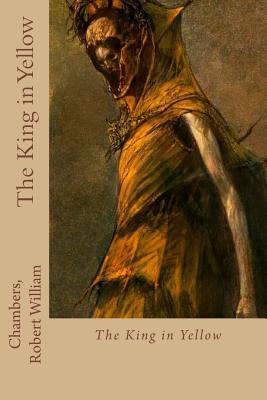We’re Sunk (original) (raw)

The King in Yellow, by Robert Chambers – This Gothic horror story from the 1890s is largely notable for being incorporated into H.P. Lovecraft’s mythology. The title is that of a play that exists within the universe of the book, but we only see glimpses of it. While there are some common threads running through the various stories, their only direct relation to each other involves the play, which is said to drive anyone who reads it mad. This sort of device is fascinating to me, if perhaps overly vague. There have been a lot of advances in mental health diagnosis since the time of this book, after all. I guess the symptoms that we see of reading the play resemble what would now be considered schizophrenia. What we know of the play references a city called Carcosa and a figure named Hastur who has some relation to Aldebaran and the Hyades. Both of these names have been used in multiple works since then. The television adaptation of Good Omens has a demon named Hastur. The first story is set in a dystopian future (to Chambers) New York of the 1920s, and the narrator is convinced that only his cousin stands in his way of becoming King of the United States. Another has a sculptor discover a compound that turns living things to marble, something Dr. Pipt was apparently later able to make more effective. And another has a man getting into a romance with a woman from the past, whose name references the sunken city of Ys. I’ll admit that the others were a little harder to follow.

Ballad & Dagger, by Daniel Jose Older – From an author new to the Rick Riordan Presents imprint, this book deals with Santeria, a Cuban religion that mixes Yoruba tradition with Catholicism, similarly to Haitian Vodou. Within the world of this story, San Madrigal was a Caribbean island that was never colonized, settled by Santeros, Sephardic Jews, and pirates. It sank into the sea, however, and the survivors came to live in Brooklyn, where they continue their odd mix of cultural traditions. Mateo Matisse is a teenager with a passion for music, who turns out to also have the healing powers of one of the orishas, Galanika. One of his classmates, Chela Hidalgo, daughter of the head rabbi, also has godly power, and the two of them develop a close relationship over the course of the book. I can’t say I blame her; based on her picture and description, I probably would have been fascinated with her at his age. There’s a complication in that he thinks he saw her murder someone, though. And it turns out that the head of the local council, part of the pirate faction, has been hiding the fact that San Madrigal secretly participated in the slave and drug trades. The council has also maintained power through hand-picked successors despite the pretense of democracy. Her choice as successor, Gerval, is a musician who’s become successful outside the community, and is the incarnation of another orisha. There’s a lot going on in the story, and it’s a pretty fascinating experience.

The Past Is Red, by Catherynne M. Valente – On a post-apocalyptic Earth where global warming has destroyed most of the land, the survivors live on floating patches of garbage, where they’ve developed their own society. For instance, their names are based on whatever trash they find while on a journey, which results in a lot of them being called brand names. Neighborhoods are named after the prevailing sort of garbage in a particular settlement, resulting in names like Pill Hill, Candle Hole, Far Boozeaway, and Scrapmetal Abbey. The people have a negative opinion of those who came before and destroyed the environment for no particular reason, referring to them as Fuckwits. And Oscar the Grouch is remembered as a patron saint of trash. The book is even dedicated to Caroll Spinney, Oscar’s (and Big Bird’s) long-time puppeteer. Tetley Abednego is a young resident of Garbagetown who has an attitude that the author compares to that of Candide, generally quite optimistic despite her poor quality of life and the fact that people hate her for sabotaging a pointless attempt to find dry land, which would have wasted the resources they still had.
This entry was posted in African, Authors, Book Reviews, Carribean, Catholicism, Characters, Christianity, Global Warming, Health, Judaism, L. Frank Baum, Magic, Magic Items, Monsters, Music, Mythology, Names, Neil Gaiman, Oz, Oz Authors, Plays, Relationships, Religion, Rick Riordan, Santeria, Science, Sesame Street, Television, Terry Pratchett, Voodoo, Yoruba and tagged ballad and dagger, candide, carcosa, caroll spinney, catherynne valente, demons, dr. pipt, galanika, good omens, h.p. lovecraft, hastur, horror, liquid of petrifaction, orishas, oscar the grouch, outlaw saints, pirates, rick riordan presents, robert chambers, the king in yellow, the past is red, voltaire, ys. Bookmark the permalink.